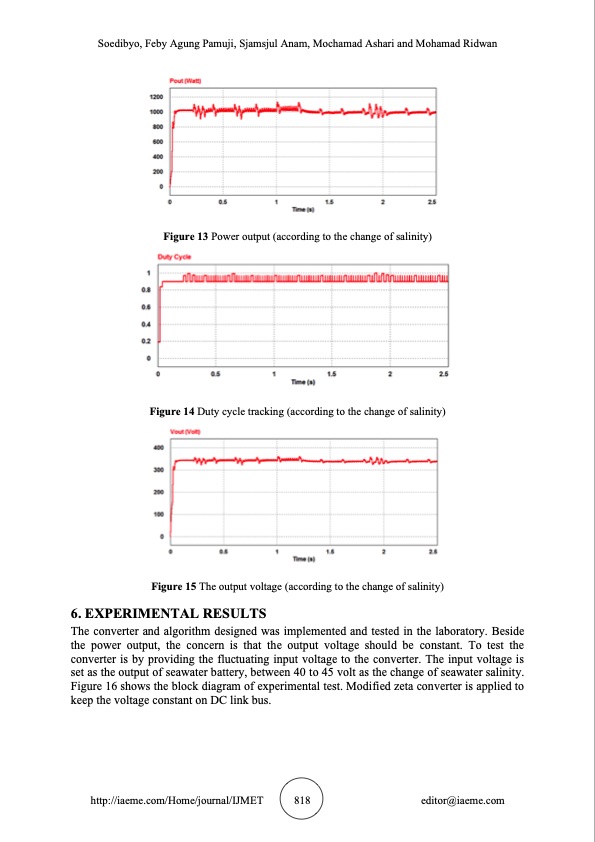
PDF Publication Title:
Text from PDF Page: 011
Soedibyo, Feby Agung Pamuji, Sjamsjul Anam, Mochamad Ashari and Mohamad Ridwan Figure 13 Power output (according to the change of salinity) Figure 14 Duty cycle tracking (according to the change of salinity) Figure 15 The output voltage (according to the change of salinity) 6. EXPERIMENTAL RESULTS The converter and algorithm designed was implemented and tested in the laboratory. Beside the power output, the concern is that the output voltage should be constant. To test the converter is by providing the fluctuating input voltage to the converter. The input voltage is set as the output of seawater battery, between 40 to 45 volt as the change of seawater salinity. Figure 16 shows the block diagram of experimental test. Modified zeta converter is applied to keep the voltage constant on DC link bus. http://iaeme.com/Home/journal/IJMET 818 editor@iaeme.comPDF Image | SEAWATER BATTERY APPLICATION FOR SAILING BOAT

PDF Search Title:
SEAWATER BATTERY APPLICATION FOR SAILING BOATOriginal File Name Searched:
IJMET_10_01_083.pdfDIY PDF Search: Google It | Yahoo | Bing
Product and Development Focus for Salgenx
Redox Flow Battery Technology: With the advent of the new USA tax credits for producing and selling batteries ($35/kW) we are focussing on a simple flow battery using shipping containers as the modular electrolyte storage units with tax credits up to $140,000 per system. Our main focus is on the salt battery. This battery can be used for both thermal and electrical storage applications. We call it the Cogeneration Battery or Cogen Battery. One project is converting salt (brine) based water conditioners to simultaneously produce power. In addition, there are many opportunities to extract Lithium from brine (salt lakes, groundwater, and producer water).Salt water or brine are huge sources for lithium. Most of the worlds lithium is acquired from a brine source. It's even in seawater in a low concentration. Brine is also a byproduct of huge powerplants, which can now use that as an electrolyte and a huge flow battery (which allows storage at the source).We welcome any business and equipment inquiries, as well as licensing our flow battery manufacturing.| CONTACT TEL: 608-238-6001 Email: greg@salgenx.com | RSS | AMP |